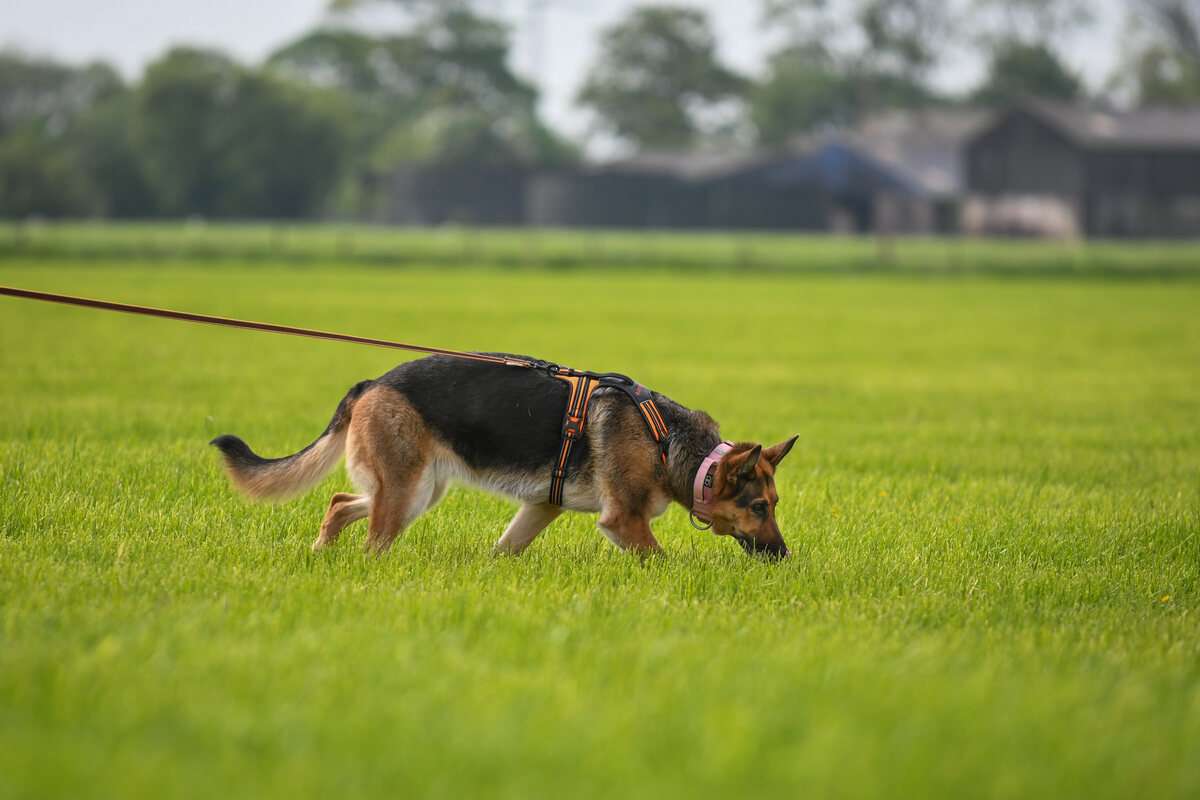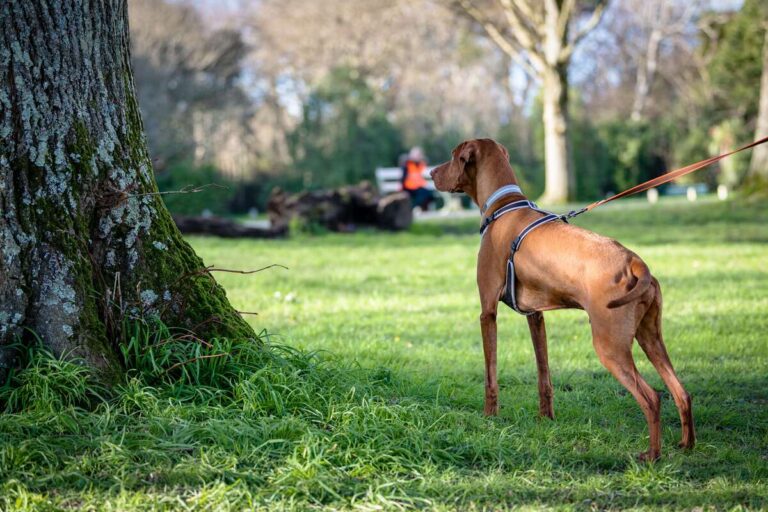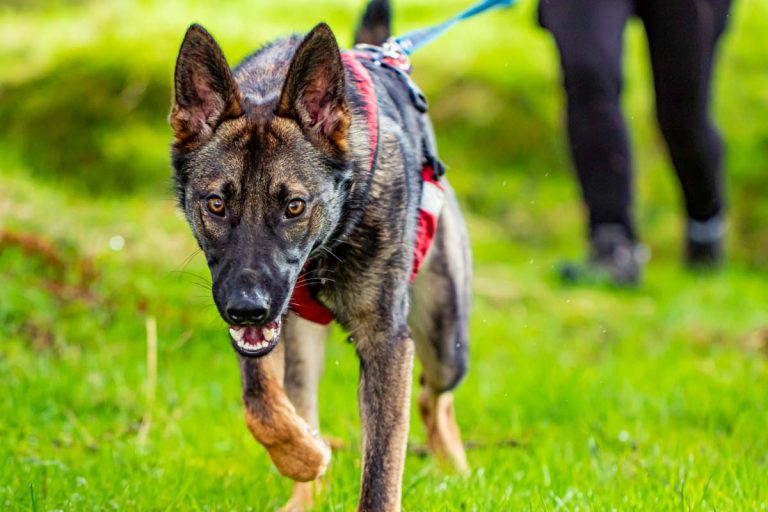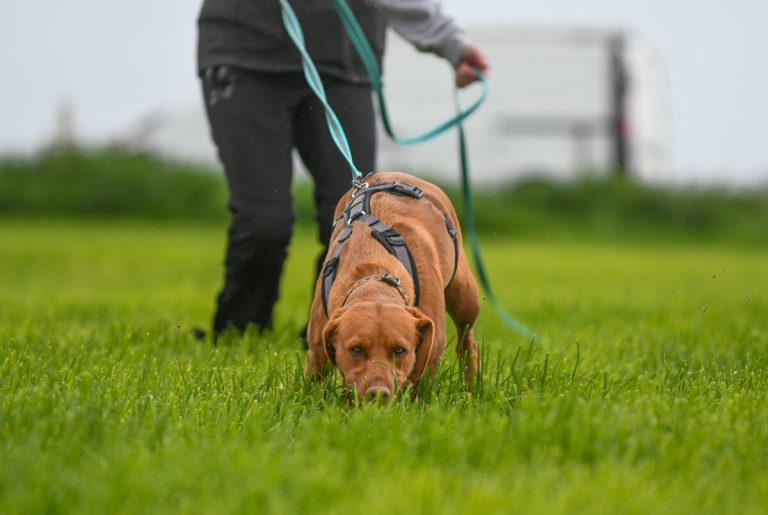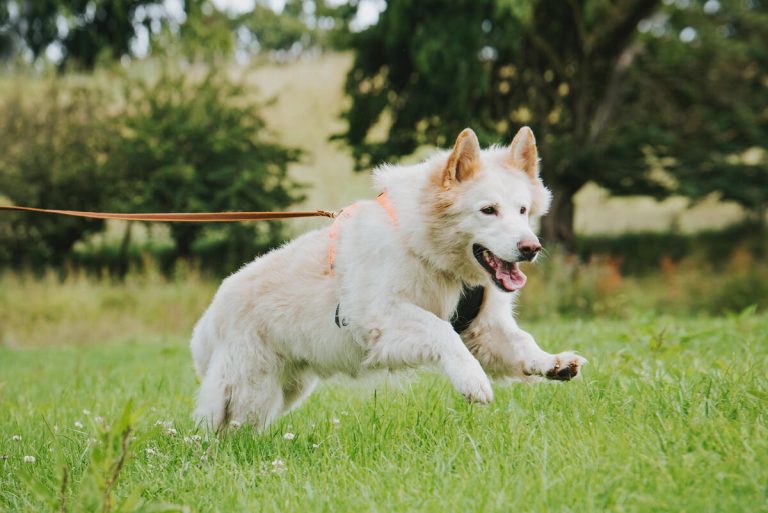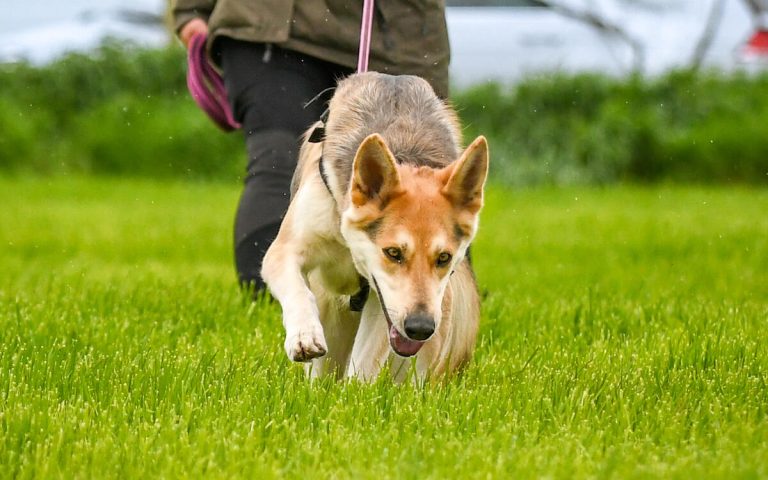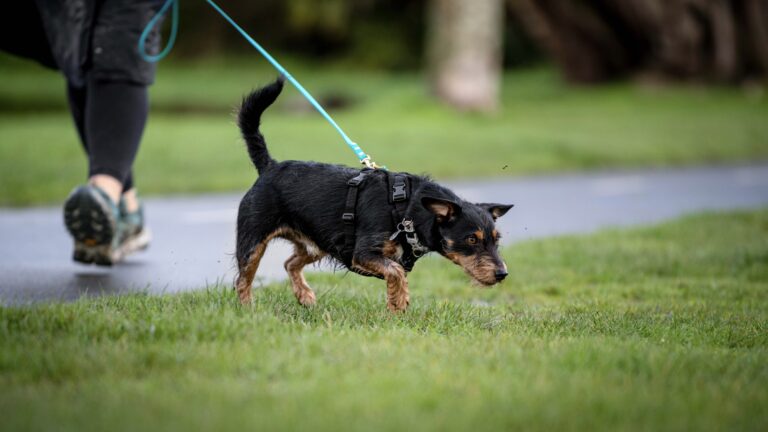How Can Tracking Help Your Mantrailing Dog?
Traditionally tracking and mantrailing have been separate in the UK, with one pooing the other in many cases in the sport world.
But I firmly believe if you want a better mantrailing dog, you need to look at tracking in many cases.
The difference between tracking and mantrailing isn’t that huge, but tracking is about teaching the dog what we want. Whereas mantrailing is more free and dog led.
You need to read my blog on the differences before reading further. You can find it here
We want them to follow the ground disturbance and human scent in tracking. The reward comes from the ground and the scent, not the person at the end. There is no reward in rushing and the prizes are for accuracy.
Whereas mantrailing is about getting to the end following the human scent, which is a mixture of skin rafts bacteria and other scents, in whatever way works for the dog, we give very little help to the dog and allow them to work in a natural way to them.
Basically tracking is more about following the human scent, whereas mantrailing is about getting to the human. They follow scent to do it, but often use law of averages and problem solving to get there too which can lead to some conflict with the handler.
They follow both blown and ground scent, and use it in the way that works for them. There are no prizes for accuracy, but it is what the handler strives for.
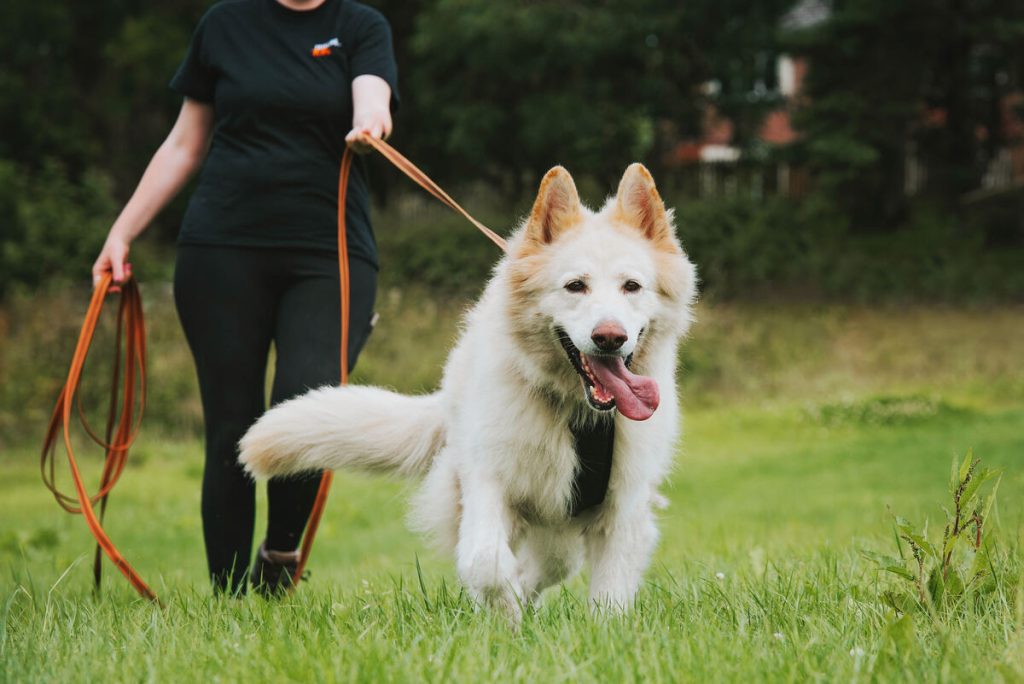
So how can tracking help my mantrailing dog?
The training for tracking has more foundations and steps to it to allow the dogs to understand each step before you progress onto the next stage. You are teaching the dog how to work the human scent and ground disturbance over multiple surfaces and with varying ages and distractions.
1. You can break the learning into stages:
In mantrailing there is only a few stages of learning for the dog, and they can be a bit loosey goosey for some dogs depending on the methods used.
Where as in tracking there is a linear learning which starts with small tracks and builds up to turns, longer tracks, aged, articles being smaller or different types of fabric and then different surfaces. All these changes are learned at different stages when the dog understands the part before. Each dog learns at this own pace and plans are still tailored like in mantrailing, but these smaller stages bring more clarity for the dog and the handler.
This allows for a solid understanding for the dog of the understanding of the game. Follow the human scent to the end, and there will be a reward there, but is not always a person.
It is also lower arousal for the dogs, so they are calmer when learning and therefore learn better. It puts them in a better emotional state.
2. You can power up your trails with articles:
Tracking also brings in the use of articles for the dogs to find. The articles are objects touched by the tack layer and the dogs gain rewards from these objects. These can be viewed not just as a complexity to add to the track for the dogs to indicate on, but as an important “keep going” marker for the dogs as when they hit these articles they know they are on the track and reward will come, so they keep striving forward to find more.
In mantrailing there is only reward at the end of the trail, and many dogs can get disheartened and struggle when the trails become harder to follow and have more problems in them. We as the handler can help by geeing them on, but there is no reward from the scent on route.
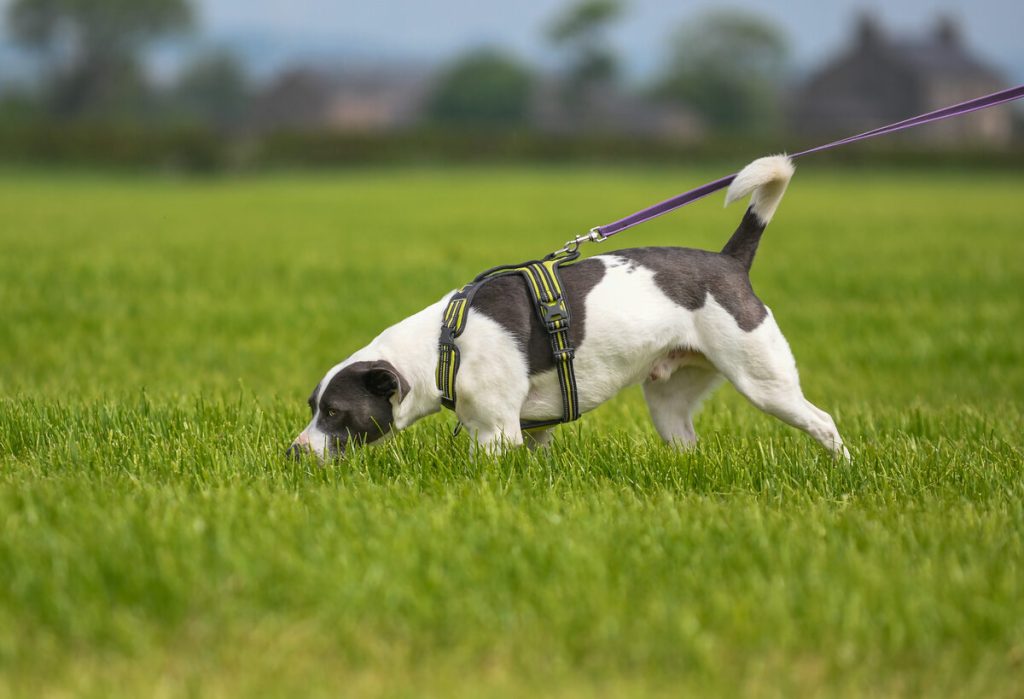
3. It builds accuracy on the trail:
Tracking teaches the dog how to follow the scent specifically instead of where is has blown to or could be moving on the air. Many breeds can become their own worse enemy through following blown scent hundreds of metres away from the actual source, where the person has walked.
They then run out of scent and cannot recover the trail again.
Gundog breeds and air scenting breeds can be typically undone by this skill which does serve them in their normal jobs such as quartering for game, but in mantrailing find it difficult as there are so many more obstacles in the way.
By adding tracking into your dog’s tool box you teach them how to use the scent where the trail is and add the value of following the scent, over rushing to the end of the trail.
You can read your dog on and off the trail better.
The dogs become so much easier to read in just a few sessions of tracking alongside mantrailing, as the behaviour on the track when the dog comes off the track is so easy to read. You suddenly see their head lift and the dog may even stop as they lose the scent, they then search for it and then pull into it when they hit the track again.
Because the accuracy is rewarded by the scent itself and the articles, you as the handler have all the time to observe your dog and see its subtle changes in and out of scent. The dog usually becomes much slower as well, as they aren’t rushing to the end.
4. You become part of the reward:
In mantrailing we are losing the joy of rewarding our dog together in a party, instead we leave it to the stranger in the bush at the end. The dog finds more value in finding a stranger than us, and as a behaviourist I find this alarming.
I want the dog to follow the scent, alert to the person and then want to tell me all about it.
We are working as a team to find the person, and by removing ourselves from the party we can actually damage our relationship. We can play in mantrailing, but so much emphasis is put on the trail layer we forget to be part of the party.
In tracking we can follow the track and then play with the dog at the end. We do the learning together and are all the party at the end.
Check out my free guide to rewarding your Mantrailing Dog
5. You can practise at home:
In mantrailing you need to have a willing victim to go hide for you and stay somewhere for a period of time, so often the trails are very fresh which can harder for the dog to follow.
It is hard to get volunteers to go hide for any length of time, so weekly practices are hard.
Where as in tracking you can have someone walk a track and leave the area after, you don’t need them there, just to know where they have been and depending on the style of tracking you use a scent article to start from.
You can also put out your own tracks and work them, meaning you don’t actually need anyone to help. Just to have a learning plan in your head.
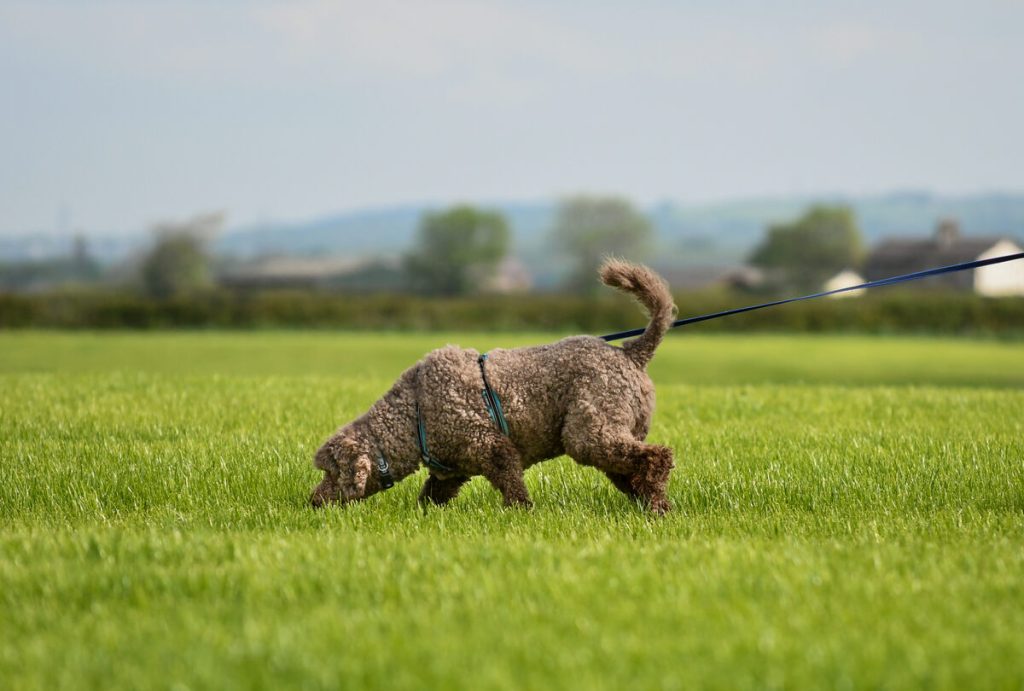
Conclusion
I believe that tracking, whatever the method used, can help mantrailing dogs become easier to read on the trail, and more accurate through teaching things more clearly for the dogs.
I really urge any mantrailing student to take some time and learn tracking from one of the instructors across the UK who have been teaching it for years, using trusted and tested methods for fun.
Working together as a team is the foundation of mantrailing as a sport in the UK, and we let the dogs figure out so much without us and wonder why they become hard to read and understand. We never taught them how to work out the problem, just to go and do it.
With more structure and human learning alongside the dogs, we can become a better team.
I will add though that mantrailing is not going to help you tracking dog become more accurate and if you want to compete in tracking, be cautious about mantrailing as you are teaching the dogs to cut corners.
You can learn more about mantrailing and tracking over on Patreon, and joining Trailing K9s online.

